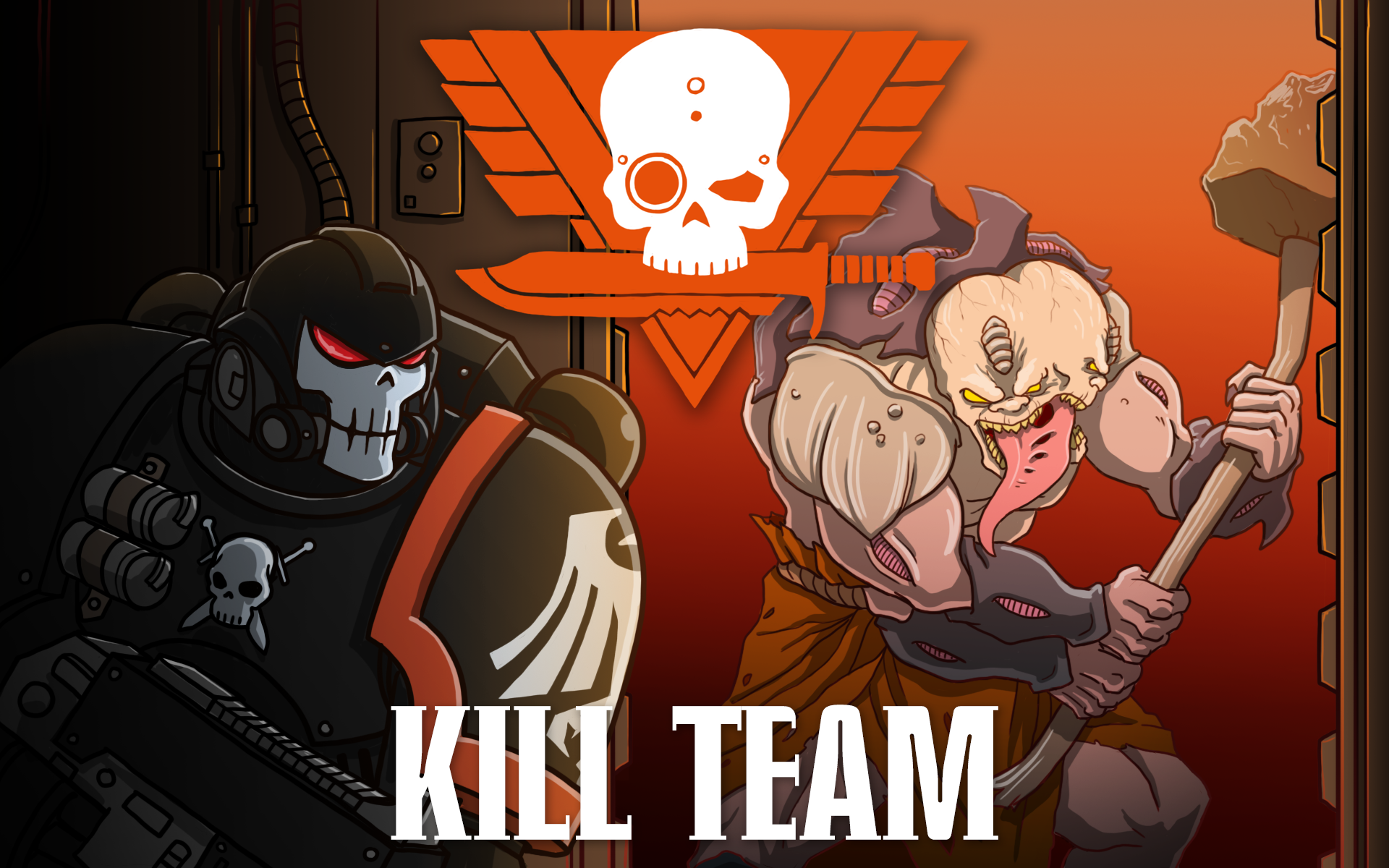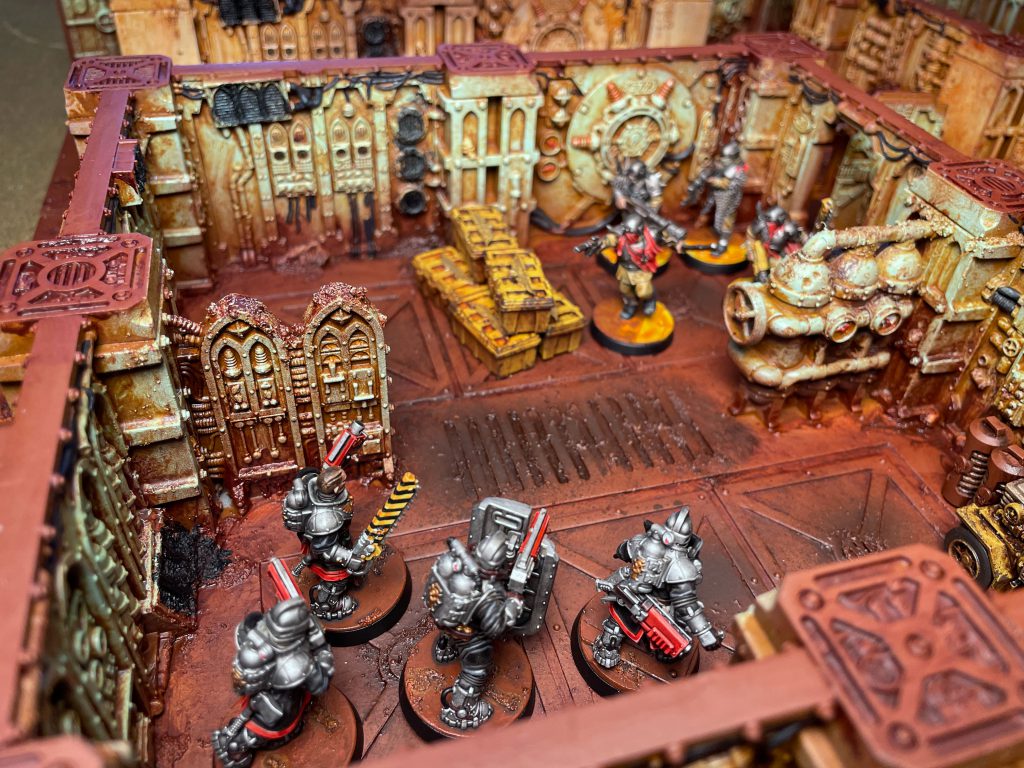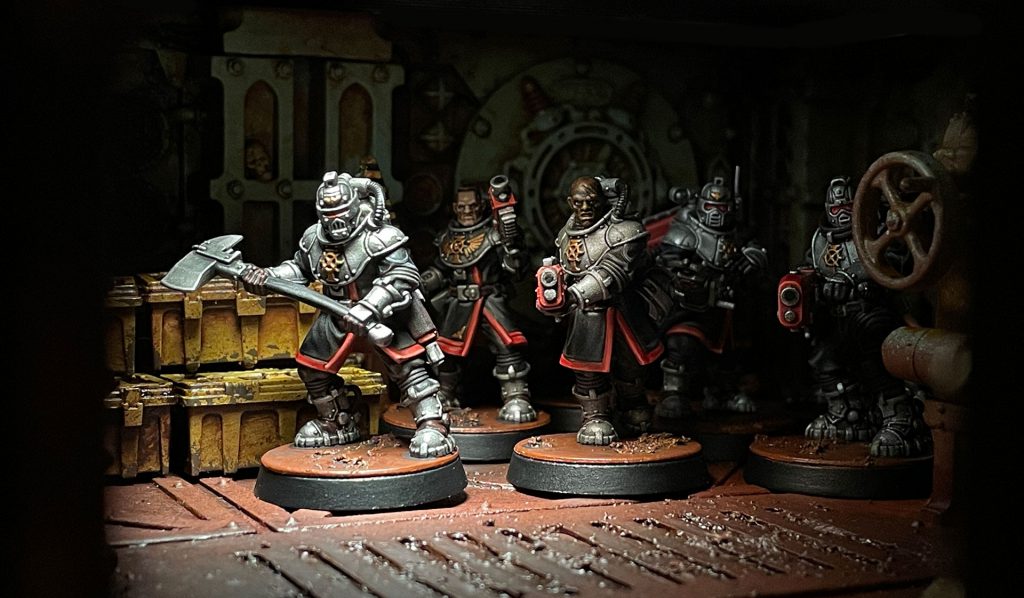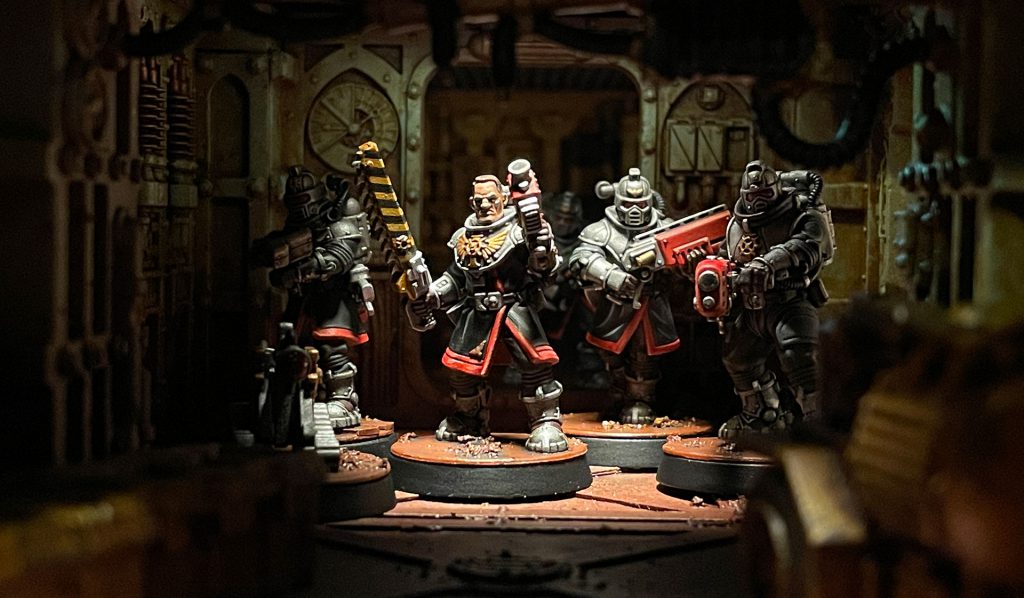Games Workshop dropped a massive update for Kill Team last Friday, giving us FAQs, errata, and commentary for nearly every faction in the game, as well as answering some of our most pressing questions about Gallowdark. We’d had quite a few questions up to this point so it was good to get clarity on a lot of the ongoing issues, but there’s also plenty left unanswered. Overall there’s a lot to cover in these updates and in this article we’re talking about everything that changed and what it means for your games.
If you’re interested in reading the FAQs for yourself, you can find them here.
The Core Rules – Errata
The Core Rules got some updates, and these include the rules for Into the Dark. There are a few minor changes here concerning order of operations, plus some long-awaited rulings on how Kill Zone Gallowdark affects the game.
Charge Actions that can be made while within Engagement Range of an enemy operative let you move out of range but you have to end up in Engagement Range of at least one enemy.
Apparently people were using free charge actions as a sort of pseudo-Disengage. Specifically, this affects the Intercession Squad if you have taken the Raider Chapter tactics, where you used to be able to Charge out of engagement with an operative. However RAW it was always the case that to perform a Charge action, you must end it within Engagement range of an enemy operative, and if you do not do that the action cannot be done and never takes place, with the action point/s spent to do the action refunded.
PG 69 – Controlling Objective Markers & Tokens – Control of objective markers is determined at the start and end of each individual action.
This errata clarifies at what point one gains control of an objective marker, which may have grown more nebulous with things like Guard that allow players to interrupt opponents mid-activation.
Page 99 – Spec Ops Campaigns, Gaining Experience – ‘If an operative completes any mission actions in a battle (excluding the Operate Hatch action), and/or earns’
This prevents operatives from farming experience by performing the Operate Hatch action, a new mission action introduced in the Gallowdark killzone. If you play Spec Ops, this is a very necessary change. If you don’t, this won’t matter at all.
Killzone: Gallowdark, Terrain Rules – Wall trait – Change the 4th bullet point to read: ‘Distance cannot be measured over or through Wall terrain; you must measure around it using the shortest possible route (as shown in the diagram below). However, measure distances to areas of the killzone through walls (e.g. the centre of the killzone or drop zones, but not objective markers or tokens).’
One of our biggest questions with Gallowdark was how you measure distance through walls to drop zones and the like. This goes a long way to fixing the most egregious examples of bad interaction between walls and ploys/tac ops, but we aren’t sure if it covers all of them.
Close Quarters Rules – Additional Rules: Tactical Ploys that let you set up outside your Drop Zone cannot be used in Close Quarters missions. Instead they can only be used once per battle in the first Firefight phase to get a free normal move and/or operate hatch action.
A MASSIVE nerf to Hunter Clades, Kommandos, and Wyrmblade. we all know a change was needed as these ploys had the potential to create insurmountable early game point leads on certain missions. However, this change is a great example of a complete overreaction as it renders these ploys all but useless on Into the Dark. A more elegant change would’ve been that operatives who enter the Kill Zone using these ploys may not score victory points or perform mission actions Turning Point 1, instead the game designers took the nuclear option. Nothing makes someone want to play a team like just deleting one fourth of their ploy options.
To add to the possible confusion, the wording on these ploys aren’t even identical. For instance with the Wyrmblade Hiding Ploy you don’t even set the operatives up on the Kill Zone, the FAQ writers couldn’t even do us the solid of listing out the specific ploys they wished to include. Just to add to the confusion, the Errata specifically mentions Tactical Ploys, failing to note that some of the examples are in fact Strategic Ploys. While there is no mechanical difference between the two this kind of imprecise language is not really fitting for such a significant rules change.
The Core Rules – Designer’s Commentary
Updated designer’s commentary was also released, clearing up a number of problem spots.
Characteristic Modifiers
Q: If an operative’s characteristics are modified during an action, does that impact the action it’s currently performing? For example, if an operative’s Movement characteristic is modified during a Normal Move action as a result of being injured.
A: No. Unless otherwise specified, apply the modifiers once the action it’s performing is complete
Q: Some rules clarify that a modifier should only be applied if an enemy operative is activated within X of the relevant operative, e.g. Rust Emanations Strategic Ploy, GELLERPOX INFECTED : ‘Only subtract from their Movement characteristic as a result of being injured if they are activated within Engagement Range of that friendly operative.’ What does this mean?
A: Do not apply that specific modifier unless the operative is activated within X of the relevant operative. In the example, Movement would be the specific modifier.
Both of these answers serve to clarify when characteristic modifiers occur. Not issues that were likely causing players many problems, but being clear on order of operations is always helpful.
General Principles
Q: Does an action performed when an operative hasn’t been activated count as an activation? E.g. Overwatch or a free Dash action from Recon in the Scouting Step.
A: No
While rules as written this was pretty clear the designers specifically point out that actions performed outside of an activation are not part of that operatives activation, which more importantly means action limitations are not an issue for them. It is important to note that operatives still may only perform an Overwatch once per Turning Point.
Q: If an operative carrying an objective marker or token loses the ability to perform the Pick Up action during the battle (e.g. Unleash Daemon, LEGIONARY ANOINTED), what happens to that objective marker or token?
A: The operative must drop it
This prevents Legionary anointed from swallowing objective markers. Another odd rules interaction that wasn’t breaking the game, but clarification is welcome none the less.
Q: If an operative performs an action during another action, e.g. an Operate Hatch action during a Normal Move action, when can they be interrupted for things like a guard attack or the PHOBOS STRIKE TEAM INCURSOR MARKSMAN Track Target action?
A: After that operative performs any action, even if another action is still ongoing. In the example, you could interrupt them after they perform the Operate Hatch action, or after they’ve fully performed the Normal Move action.
Another important clarification for Kill Zone Gallowdark as the Operate Hatch Action creates the unique scenario of an action happening during another action. In the case of Guard or other abilities allow one to interrupt an activation this allows the interrupting player more freedom on when they choose to Overwatch their opponent.
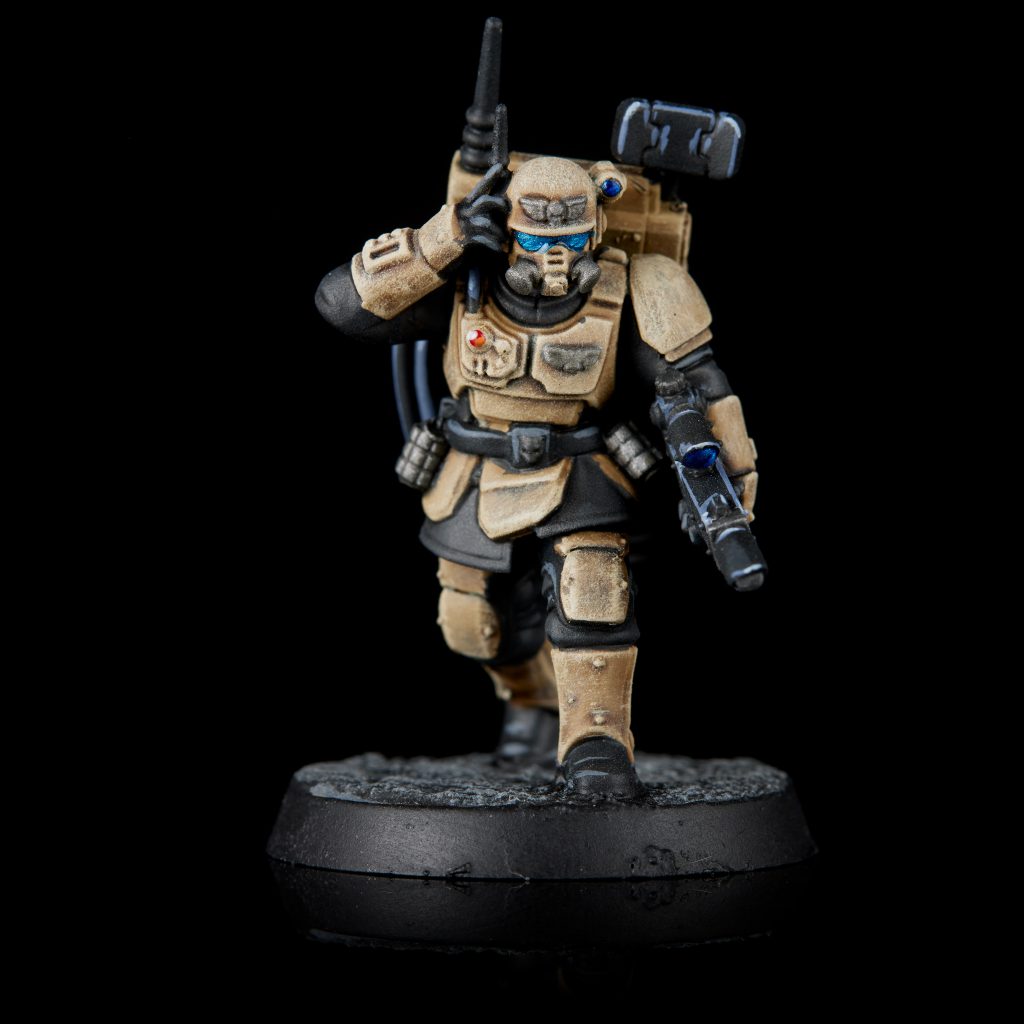
Missions
Q: For the Plant Banner Tac Op, can an operative that cannot perform the Pick Up action be selected to carry the Banner token?
A: No.
Q: When using the Sentries mission rules, when do you determine Line of Sight for raising the alarm?
A: Before and after an action is performed. Operatives can move into Line of Sight during an action, but the alarm isn’t raised unless they start or finish that action in Line of Sight.
Q: For the Duel of Wits mission (Critical Operations mission pack, Core Book), do players have to select different objective markers to be a Priority objective marker?
A: Yes.
Of these three the most significant change is that operatives who can’t perform a Pick Up Action may not be given the Banner Token for the Plant Banner Tac Op. This ties interestingly with the earlier question relating to the Legionary Anointed, who can assumedly be given the Banner token, but would immediately drop once he goes Sicko Mode.
Kill Zone Rules
Q: In Killzone: Gallowdark, the Wall trait says ‘operatives cannot move over or through Wall terrain regardless of any other rules, other than as a result of the Accessible trait.’ Do you really mean this, or can operatives move through walls as a result of rules like Breach (KOMMANDO BREACHA BOY) and Breach Point (IMPERIAL NAVY BREACHER HATCHCUTTER)?
A: Yes, we really mean this. As unique as it might seem, allowing certain operatives to move through walls breaks a fundamental feature of Killzone: Gallowdark, therefore it’s prohibited in order to maintain the experience and balance that we feel is appropriate for this killzone.
Q: On mission maps that use Killzone: Gallowdark, does the position of Hatchways indicate which direction the hatch should open in?
A: No. They simply identify the orientation of long walls with Hatchways.
Q: In Killzone: Gallowdark, does the hatch of an open Hatchway provide Cover and is it Obscuring?
A: Yes. Treat Cover lines that go underneath it as crossing it.
Q: In Killzone: Gallowdark, how do you resolve rules that require an operative to be within a certain distance of Heavy terrain?
A: Resolve this by only using pillars and wall ends (excluding wall ends for Hatchways), and Heavy terrain from a Killzone: Gallowdark supplement (e.g. Ancient Apparatus).
Here we get a number of clarifications on how to interact with Kill Zone: Gallowdark, especially when it comes to Walls. First off, operatives may never move through walls, period. Wyrnblade and Kommandos players will not be especially happy with this decision because it once again utterly invalidates certain ploys and abilities. Without any sort of replacement this is a blow to Wyrmblade, Kommandos, and Navy Breachers. After having played many Into The Dark missions I am unsure if these abilities would be as game breaking as people fear if you put the same scoring restrictions on them that I mentioned for ploys that allow operatives to be set up outside your Drop Zone.
A few more important clarifications come in the form of which part of the wall constitutes a piece of Heavy Terrain with the designers opting for pillars instead of the more obvious and less restricting wall sections, and we get a clarification that the door orientation on the maps is irrelevant, which is rather baffling since many Into The Dark maps are light on cover to begin with, and door placement can be very critical.
Close Quarters Rules
Q: How does the Guard action work when the operative must perform a Shoot action with a specific weapon, e.g. Bolter Discipline, Exalted Astartes, Dakka Dash, etc.?
A: The operative can perform the Guard action, so long as the relevant weapon is selected if it performs Overwatch or point-blank overwatch during the subsequent guard attack.
Q: Can an operative equipped with a ranged weapon that has the Heavy special rule perform a Normal Move, Fall Back or Charge action, then perform a Guard action in the same activation? If so, can it subsequently use the Heavy weapon for the guard attack?
A: Yes.
Q: If an operative incapacitates an enemy operative in a Hatchway Fight action, can rules that take effect when an enemy operative is incapacitated in combat, within Engagement Range or still work, e.g. the Rob and Ransack Tac Op?
A: Yes.
Q: Can an operative perform a Hatchway Fight action as a guard attack, as a Hatchway Fight action is treated as a Fight action?
A: Yes
Lastly, we get a number of rulings that pertain directly to how the Close Quarters rules work with the most important being that operatives with Heavy Weapons may still use Guard to make an Overwatch Attack with those weapons if they make a Normal Move or Charge. In addition, we get a clarification that operatives that may make two Shoot Actions with certain weapons may still use Guard if they perform the Overwatch Action with that weapon.
Hatchway Fight is ruled to count for rules that require operatives to either be in Engagement Range or within combat to take effect, and specifically mentions Rob and Ransack as an example. This change makes sense, but it also seems needlessly confusing, and really raises the question as to why Hatchway Fight needed to be its own action as opposed to simply making engagement range around Hatchways larger. Hatchway Fight is already weird since you don’t need the Engage Order to perform it, and it’s unclear if this change will only raise more questions than it answers.
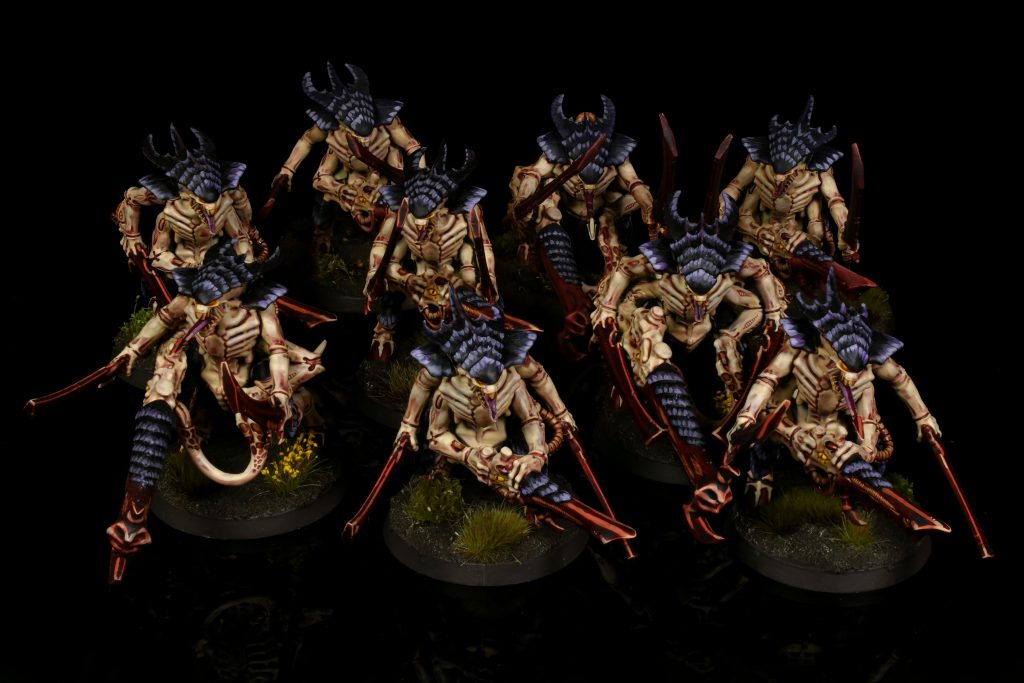
Compendium Changes
PG 156 – Hivefleets – The Lurk Strategic Ploy now reads ‘if it is in Cover and either has a Conceal order or is ready, one additional dice can be retained as a successful normal save as a result of Cover, regardless of any rules that treat the operative as having an Engage order (e.g. Vantage Point).’
The only compendium team to receive any changes, this clarifies that abilities that treat an operative as having an Engage order don’t disqualify them from abilities that require a Cover order to be used.
Phobos Strike Team
Phobos Strike teams got a number of changes, most of which are buffs and make a team that was already pretty nasty even more deadly, with a bit more variety likely to occur.
Errata: Helix Adepts can’t revive themselves
This is standard wording that we’ve seen added to every medic operative, now added to Helix Adepts. I wonder why they keep printing them without the “another’ rider.
Errata: The Infiltrator Voxbreakers’ Unique Action is now an Ability (and is free)
This is a big improvement, turning the Voxbreak action from a neat ability that could be difficult to use into an always-on passive ability that turns off re-rolls on attacks for enemy operatives within 6”. This makes the Voxbreaker a much more choice addition to your team, and essentially can help them protect themselves and nearby operatives from some of the nastier melee operatives out there.
Errata: Haywire Mines get a whole new deal when they critical hit
This one’s complicated. Basically now instead of Stun on a crit your target can’t move any further during this activation, and they get -1 AP. If it’s outside their activation when they get hit, then you subtract 1 from the AP they generate during the next activation. None of this is actually an APL modifier. This makes the mine much more useful since they can stop an opponent dead in their tracks, and reducing the number of actions they can take with a single critical hit.
Errata: Shock Grenades cost 2 EP
This drops their cost from 3, making them a little more worthwhile when you’re building your roster.
Commentary: If you use Track Target to Interrupt but have no valid Overwatch targets, you can use it again to interrupt later in the Turning Point
Helpful to know you keep Track Target up after the false start, making it so they can’t just bait it out of you.
Imperial Navy Breachers
Errata: The Navis Axejack’s Power Weapon is now a Melee Weapon
This is just a change in name, not function.
Errata: Bypassing the Navis Endurant’s Breachwall Ability requires enemies on a vantage point to be more than 2” higher up
This is more a clarification; now in order for a shielded operative to be in line of sight of an operative on a vantage point, that vantage point operative has to be meaningfully higher up (2”) than the target – you can’t just be on a lower vantage point, for example.
Commentary: Breach and Clear can still be used to activate an operative while they are under an effect that reduces their GA value or stops them from activating.
Omni-scrablers and the like can’t prevent you from activating an operative using the Breach and Clear ability.
Farstalker Kinband
Errata: Piercing Shot and Toxin Shot Equipment have Range 6” if not on a Kroot rifle
This closes a loophole that let you get full range shots with dual pistols by giving them one of these equipment upgrades.
Commentary: Mercenary Contract lets you pick a Tac Op from any unselected archetype (not just the ones you have access to).
We mentioned this in our review of the Kinband kill team, but this particular note makes this tactical ploy very good, letting you snag a tac op that’s easier to score for the mission and opponent, including those in the Security and Infiltration sets. Being able to add the likes of Behind Enemy Lines to your deck can be powerful on the right missions, but note that it’s still just adding it to your deck and diluting the odds of pulling other Tac Ops.
Other Commentary and FAQs
Corsair Voidscarred: When determining the closest objective marker for the Plunderers Strategic Ploy, treat all hatchways as open.
An important but necessary clarification for Gallowdark; you can’t use closed doors as a way to game which objective marker is the closest.
Kommandos: Do not use the Blow it Up! Tac Op when Close Quarters rules are in effect
This side steps the question of how to pick a terrain feature in Gallowdark by just taking the tac op out of your arsenal. They’ve done this with a number of Tac Ops in Gallowdark and the net effect is that it makes several teams worse. This is another blow to Kommandos, and it is odd that they took the time to clarify what counts as a piece of Heavy Terrain for ploy and Tac Op restrictions just to go ahead and delete it from the game.
Legionary Kill Teams: Do not use the Dark Desecration Tac Op when Close Quarters rules are in effect
Again, instead of having you sort out how to pick a terrain feature in Gallowdark, this Tac Op is removed from your arsenal.
Legionary Kill Teams: Perpetual Aggression moves can be interrupted
For the purposes of rules that let you interrupt an action with another (such as Guard), the Normal Move action an operative can make after fighting with Perpetual Aggression counts as a separate action and so can be interrupted either before or after making the post-fight move.
Warpcoven: A Gunner can shoot, then Guard with Exalted Astartes
As a consequence to the updated Exalted Astartes Strategic Ploy, Gunners can now shoot twice if they don’t fight, though they pay an extra AP to do their second shoot action. This then begs the question as to whether they can give up their second shoot action to go on Guard in Close Quarters missions, and the answer is “Yes,” provided they give up an additional action when doing so (basically, you can’t move).
Veteran Guardsmen: Using a Tactical Asset with no targets
If you use a tactical asset and there are no valid targets for it to be resolved, you can cancel it and use it later in the turning point.
Pathfinders: When determining if Condensed Environment reduces attacks against a target that is being protected by a drone the cover lines are drawn to the protected target.
This is in line with the previous commentary concerning protecting operatives being hit by Blast and Torrent weapons.
Void-Dancers and Wyrmblade – Previous Rules Errata and Commentary have been annotated to show they apply to both the White Dwarf and Kill Team Annual entries.
Now the local rules lawyer can’t claim that changes only apply to White Dwarf. It is worth pointing out this was also done for Warpcoven, but not for Hunter Clade due to the previous Hunter Clade Errata being so old that it actually made it into the print of Kill Team Annual.
Intercession Squad – If an operative is incapacitated during its activation, and uses Wrath of Vengeance, it may not perform an additional shooting action if it has already reached its limit for that activation.
This basically means that even though the operative is incapacitated it is still in its activation and thus hindered by action restriction.
Eulucidian Starstriders – If a Privateer Asset is selected to be used and there are no valid targets it can be canceled and used at a later point.
This is similar to the Track Target ruling for Phobos, basically if your opponent has abilities that would otherwise prevent you from performing an action or using an ability that action/ability is not lost. These rulings are good because they help to establish precedent for any similar future interactions.
Final Thoughts
We have been clamoring for a Kill Team FAQ ever since Into the Dark was released, and well…we got it! There is a lot here, and a lot of it is good. Unfortunately, this good is really outweighed by the bad as the solution to the weighest questions was to simply remove the problem from the game instead of actually fixing it. This means you have a strange situation where Into The Dark feels less like an expansion and more like a reduced version of Kill Team where nearly a dozen Tac Ops and Ploys have simply been removed from play because the writers couldn’t be bothered to come up with any sort of replacement or proper balancing measure. If I had to describe the FAQ with one word, it’d be lazy.
